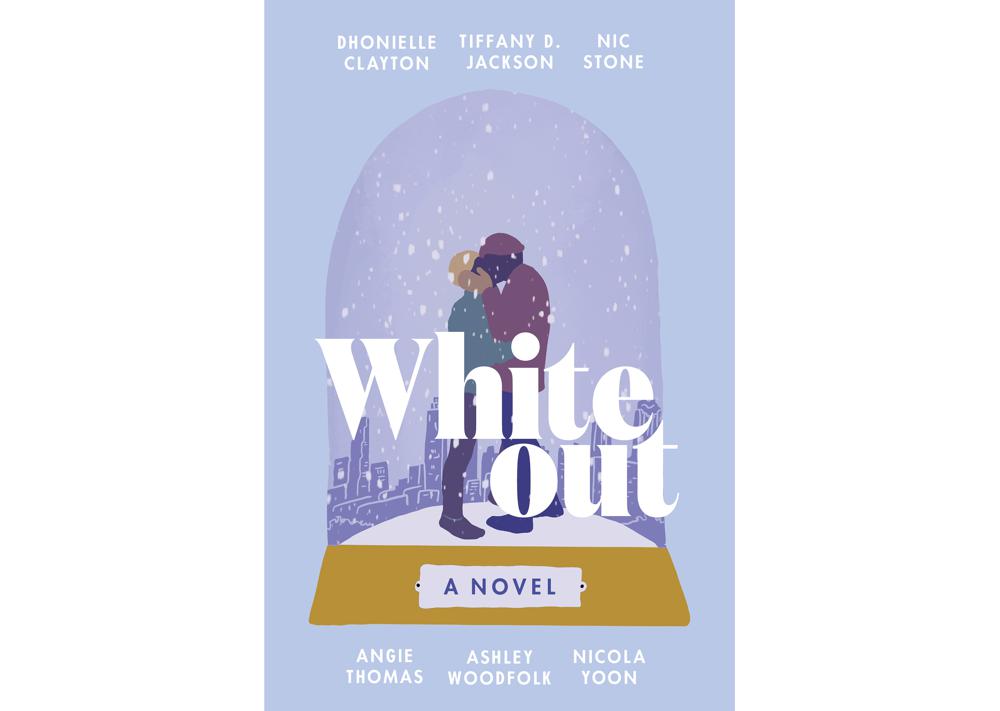6 popular Black authors co-write teen romance ‘Whiteout’
"Whiteout" is a follow up to the group's 2021 novel "Blackout"
NEW YORK (AP) — Dhonielle Clayton is not just a bestselling author of young adult fiction. She’s an organizer, a former teacher and a founder of the grassroots publishing movement We Need Diverse Books. She’s also the kind of friend who can convince five of her well-known peers to collaborate on a single novel, and then come back for another.
Opinions differ over her personal style:
“A tiny tyrant,” jokes novelist Tiffany D. Jackson, whose books include “Monday’s Not Coming” and “Let Me Hear a Rhyme.”
“A little pushy,” says Ashley Woodfolk, author of “When You Were Everything” and “The Beauty That Remains” among others.
Or, as Clayton likes to describe herself, “the ringmaster,” “the center of the circus,” practitioner of the art of “tender leadership.” “They say I bullied them into this. But I have leadership skills, and I was persuasive,” she says.

Clayton thought of a group narrative after seeing the 2019 romantic comedy “Let It Snow” and wanted to create a story centered on the lives, and loves, of Black teens. She brought in not just Woodfolk and Jackson, who agreed despite having a background in thriller writing, but fellow bestsellers Nicola Yoon (“Everything Everything”), Nic Stone (“Dear Martin”) and Angie Thomas, whose “The Hate U Give” is among the most talked about young adult books of recent years.
In 2021, the six authors teamed up on “Blackout,” a romance about Black teens during a power outage in New York. The Obamas’ Higher Ground production company is adapting the book into a Netflix series. The friends have just published a second novel about another city in a moment of paralysis: “Whiteout” takes place on a snowy day in Atlanta, where even a couple inches of precipitation can stop traffic as effectively as a blizzard up North.
Like “Blackout,” the new book follows a wide circle of young people at various points in their relationships. Clayton helped establish the narrative by sending the other authors a list of what she calls common romance tropes she thought worth dramatizing — exes to lovers, enemies to lovers, forced proximity, best friends to lovers and dude in distress (as opposed to damsel in distress).
“Each chapter is about helping a core couple fix their stuff,” Clayton says.
Stories with multiple authors aren’t new — Clayton previously co-wrote “The Rumor Game” with Sona Charaipotra. But the creators of “Blackout” and “Whiteout” organized the books to the point of scientific certainty. If Clayton is best at getting the action started, Woodfolk is the resident expert on Google Docs, tracking the amount of sunlight for given sections of “Blackout” and placing characters in precise areas of Atlanta for “Whiteout.”
The book’s editor at the HarperCollins imprint Quill Tree Books, Rosemary Brosnan, kept her own records. She set up an Excel spreadsheet and called it “Whiteout — Continuity and Consistency,” through which she tracked “character details, setting, time stamps, character intersections” and other parts of the narrative. She needed another chart to make sure she knew every scene’s location.
“I’m unfamiliar with Atlanta, so I used Google Maps to map out where the characters were, and then asked the authors to resolve any questions about setting,” she added.
Individual authors rotated chapters, but readers aren’t told who wrote which, excepting a series of clues at the end that range from the easily searchable (“the only Atlanta native among us”) to the more mysterious (“the self-professed love grump of the group”). Keeping identities hidden was part of the fun, the authors explain, (“Kids love puzzles,” Clayton says), and a way of getting readers to focus on the book itself.

“One of the things we realized from ‘Blackout’ was that people were sort of obsessed by who was writing which story and were thinking of it as an anthology rather than an actual book co-written by six people,” Jackson says. “So there was an executive decision not to say who wrote each story.”
“People are biased with themselves whether they realize it,” Woodfolk says. “So seeing somebody’s name automatically colors the reading experience, the experience of the book.”
“Whiteout,” like “Blackout,” is a page-turning romance but also a message of love from the authors to their fans that their stories are worth telling and their flaws forgivable. Jackson remembers how rarely she saw people like herself in the books she read as a child and how often Black characters in romance fiction were relegated to the “sassy best friend.” Clayton believes that the contributors’ shared ambition helped make what might have been an unwieldy project assured and professional.
“We all understood the mission and that we needed to add our pieces to make the missions complete; everyone knew what they needed to do,” Clayton says. “We are all in the service of children and teens. This is purpose-driven work for us. So, that being the heart of what we do, means there is no nonsense when it comes to this work.”
TheGrio is FREE on your TV via Apple TV, Amazon Fire, Roku and Android TV. Also, please download theGrio mobile apps today!
More About:Books



